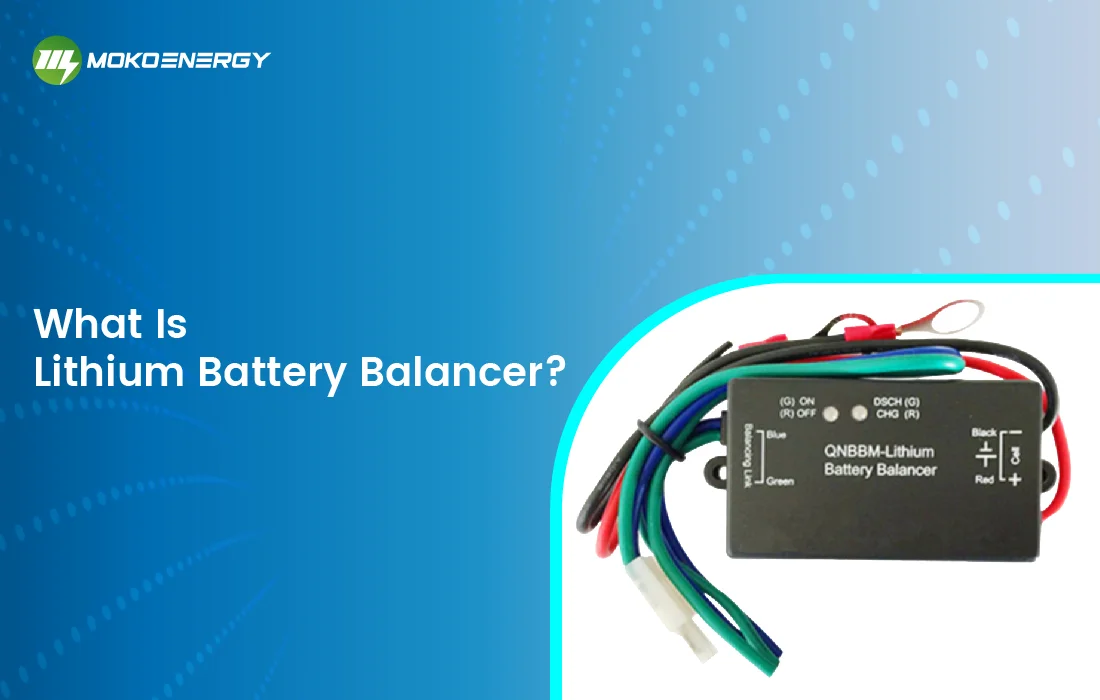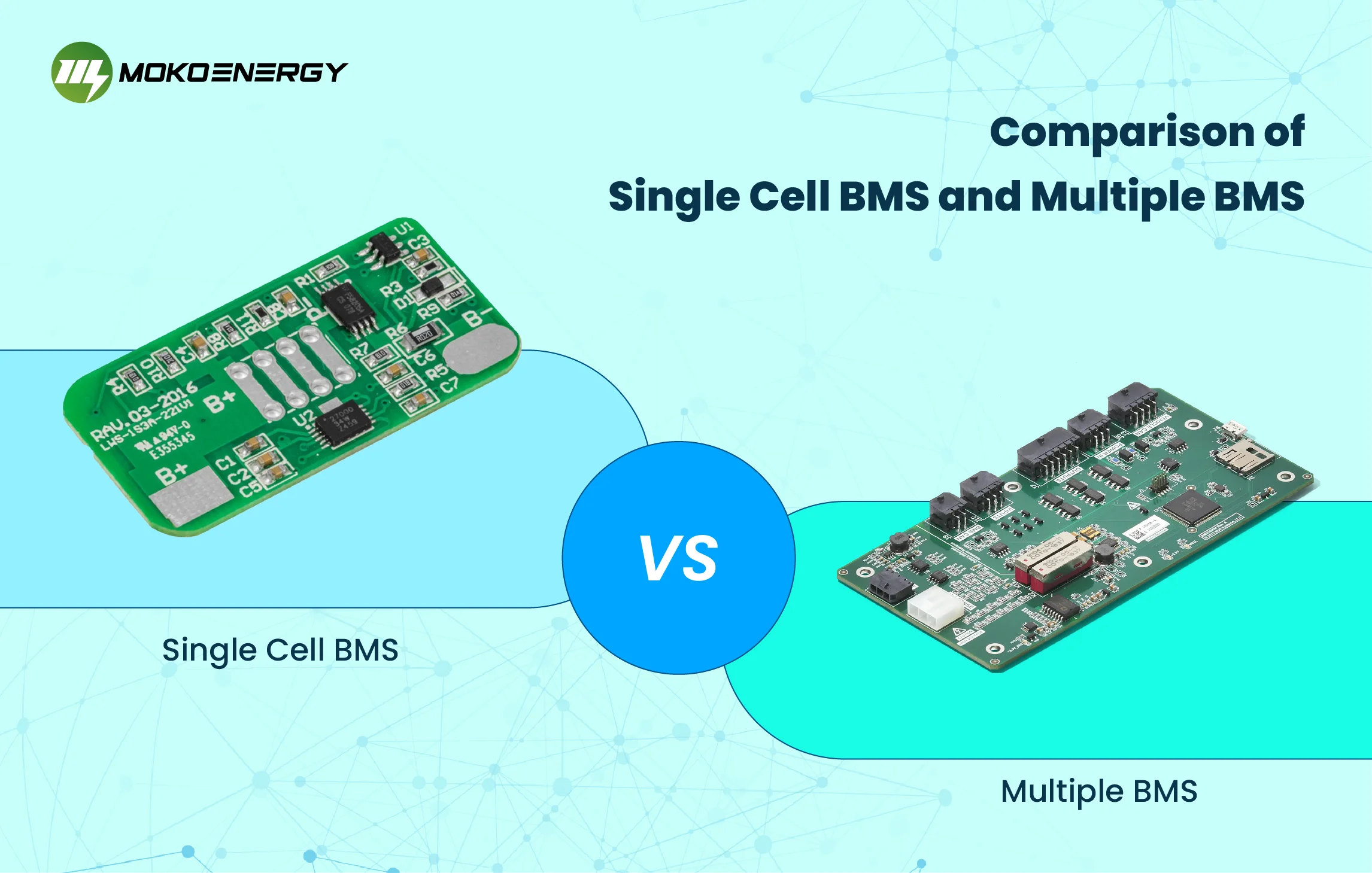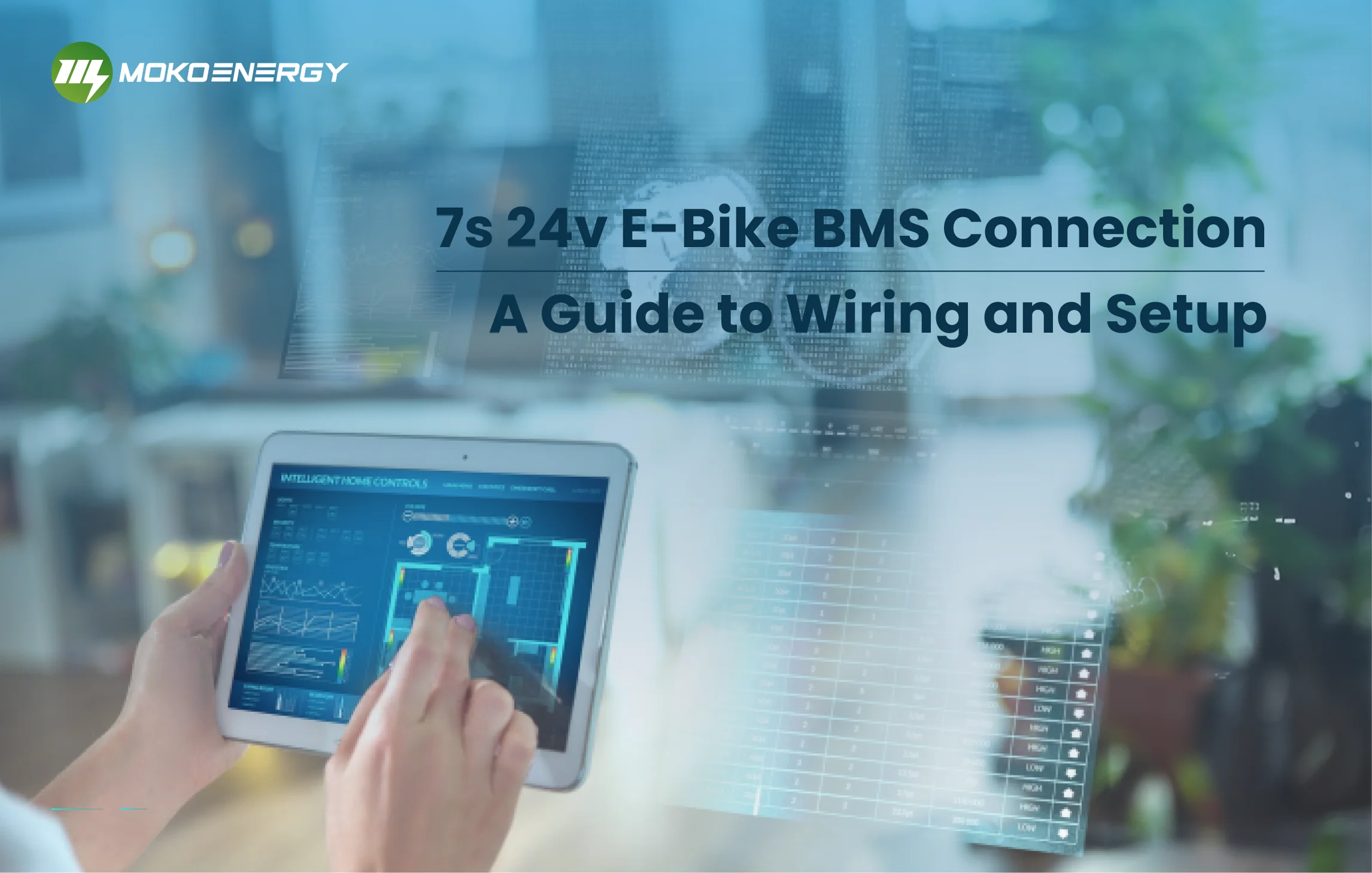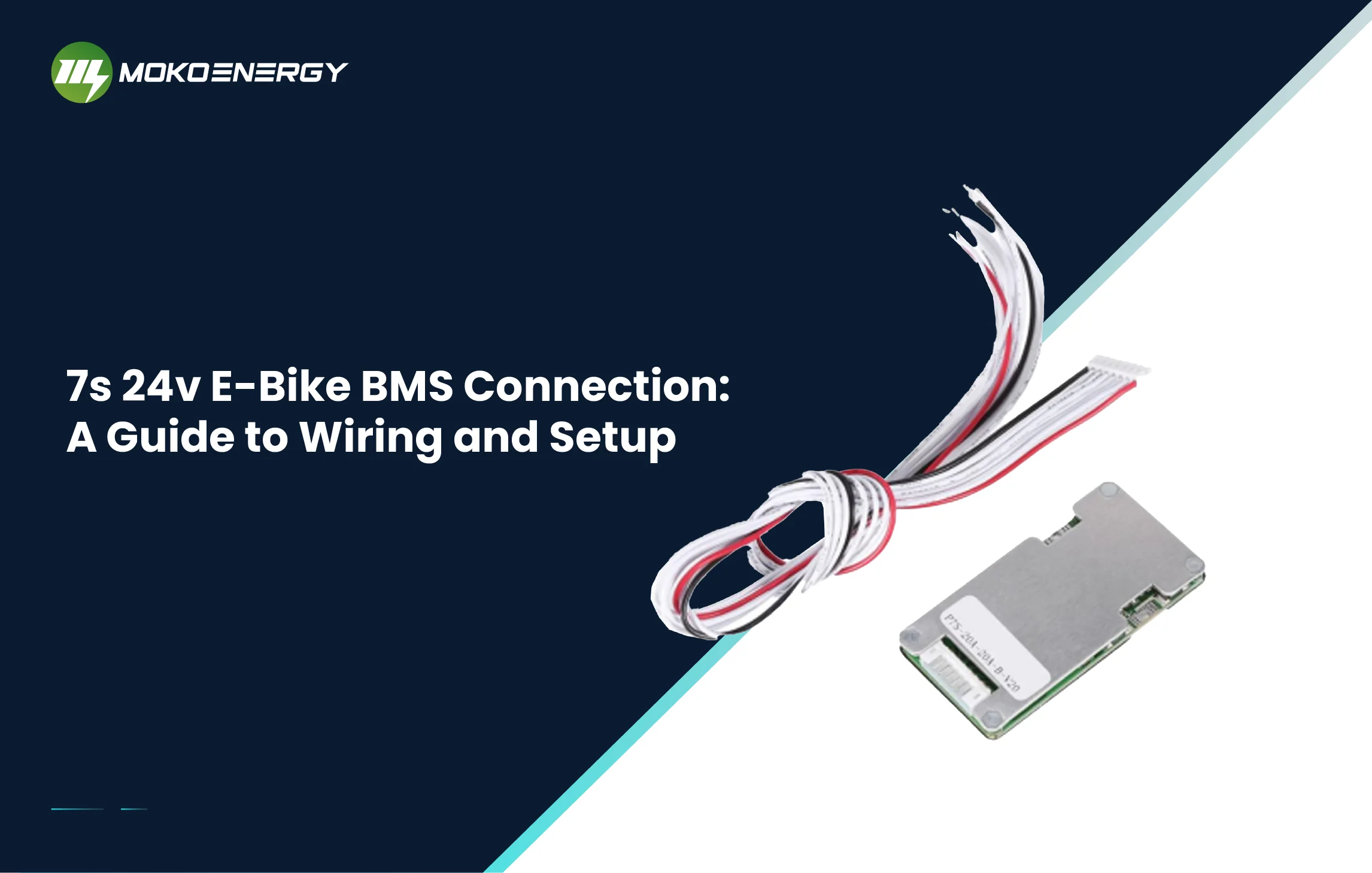In addition to ensuring that the lithium battery pack is not overcharged or over-discharged, the battery management system BMS can also maintain the balancing of the battery pack through the lithium battery balancer. Almost all BMS on the market have equalization functions, equalization is mainly divided into passive balancing and active balancing.
What is a lithium battery balancer?
To begin with, let us learn what a lithium battery balancer is. A lithium battery balancer is one type of battery protection circuitry used to prevent the voltage difference between the lithium batteries within the battery to reduce the shortening of the battery’s lifespan. As we know, there are various types of lithium battery packs because of the differences in the chemical composition and manufacturing methods of battery cells, which can cause power differences and in some cases, shorten the battery life or decrease performance. The role of the lithium battery balancer is to:
- Realize the monitoring of the voltage and current of the battery cells through the sensor.
- Extract a certain amount of power from the high-capacity cells and introduce it into the low-capacity cells.
- Keep the voltage and current of the cells in the whole lithium battery pack stable.
- Prevent over-charging or over-discharging.
- Prolong the service life of the batteries.
How do Lithium battery balancers work?
Lithium battery balancers can be of two types named passive balancers or active balancers to balance the charge of every single cell or battery module of a larger pack.
Passive Balancing
This is one of the easiest and most popular techniques for solving problems. In this way, the voltage of each cell is monitored through the passive balancer. In a particular phase of charging, if one, or more cells rise to a particular high voltage level, the balancer will then allow the bypass or shunt resistor to discharge a small amount of current. This keeps the higher capacity cells from charging too much, while the lower capacity cells continue to charge to the same level. On the flip side, the energy that is bled off is wasted as heat energy.
Active Balancing
This is a more developed approach does not waste energy as it directly moves the charge through the higher cells and transfers it to the lower cells. This is normally achieved by using capacitors or inductors to transfer charge between the cells. Active balancers are more elaborate and costly but they allow for full utilization of the battery capacity and achieve near maximum cell longevity by equalizing all of the battery’s cells during charge and discharge cycles.
Passive and active balancing both start automatically depending on the voltage measures of the cell and the programmed voltage thresholds. More complex balancing may also include temperature control where the balancer changes its balancing behavior according to the temperatures of the cells.
Its main aim is to ensure that none of the cells is over or under-charged compared to the other cells in the pack which can lead to over discharge, over charge or voltage fluctuations that reduce the pack capacity and life.
How To Connect Lithium Battery Balancer With Battery Packs?
As the battery balancer can be applied to 24V, 36V, 48V and any other N*12V lithium battery system, it is essential to know the way of connecting the lithium battery balancer with these battery packs. Lithium battery balancer wiring can be done to a 24V, 36V, or a 48V battery pack but it is recommended that the user follows the manufacturer’s instructions. Specifically, the method usually entails paralleling the balancer with the battery pack and linking the positive and negative terminals of the balancer to the corresponding terminals of the pack. The balancer will also have individual or distinct input/output terminals or contacts for each single cell or a number of parallel-connected cells in the pack. The pack’s voltage is used to decide the number of cell connections the balancer will need to make. Some balancers are made with a specific voltage range in mind, others are made to balance packs at a range of voltages through some kind of setting or configuration.
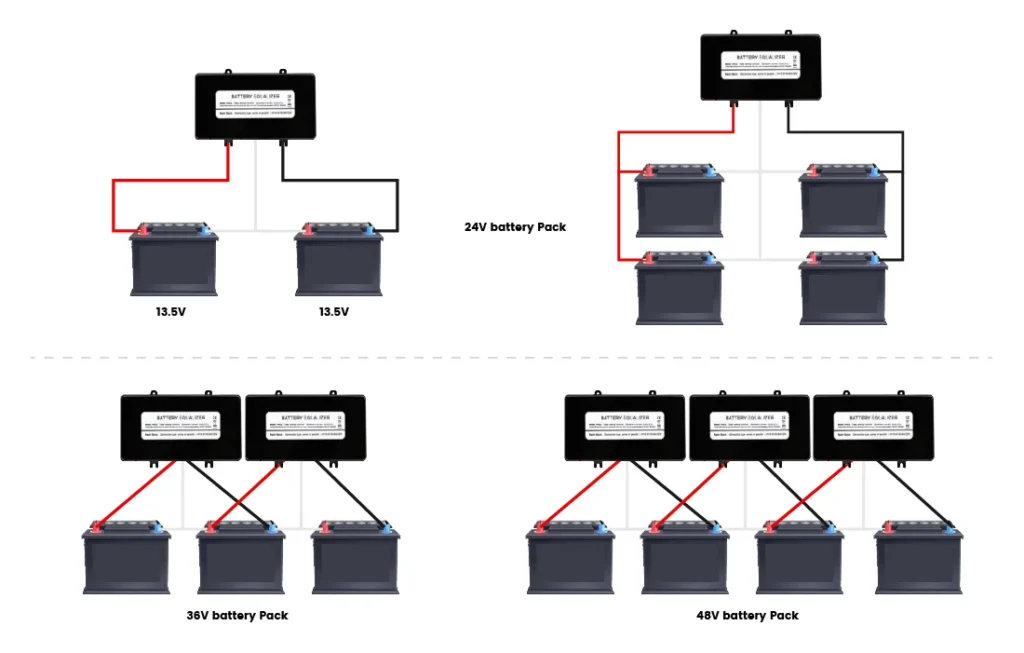
For 24V Battery Packs
- Ensure the balancer is rated to handle 24V nominal pack voltage. Many balancers support 7S (24.1V nominal) configurations.
- Connect the balancer’s main positive and negative terminals to the pack’s positive and negative terminals.
- Use the balancer’s individual cell voltage taps to monitor each lithium-ion cell in the 7S pack. Connect each tap to the corresponding cell’s positive terminal.
For 36V Battery Packs
- You will need a balancer rated for 36V nominal or higher, such as one supporting 10S (36.3V nominal) lithium pack.
- Again, the main positive and negative from the balancer connect to the pack’s terminals.
- Use the 10 individual cell taps to wire to each of the 10 cells’ positive terminals for monitoring.
For 48V Battery Packs
- Select a balancer rated for at least 48V nominal voltage. Common configurations are 13S (48.1V) or 14S (51.8V).
- The main positive and negative terminals connect to the pack as before.
- Use the 13 or 14 cell taps to wire to each lithium-ion cell’s positive terminal for voltage monitoring.
Wiring Notice
1. The red wire connects to the positive terminal of the series battery pack.
2. The black wire connects to the negative terminal of the series-connected battery pack.
3. When the battery pack is less than 4, the extra cable can be suspended (avoid positive and negative terminals), which will not affect the equalization effect.
4. Before connecting to the balancer, please confirm the positive and negative terminals of the battery packs to avoid short circuits between the balancer terminals.
Whether a Lithium Battery Balancer Is Necessary
Whether or not it is necessary to use a lithium battery balancer depends on the specific lithium battery type and wiring method. Generally speaking, the following are the recommended cases to use a balancer:
- Battery pack voltage exceeds 30V
- High-power batteries, such as electric vehicle batteries, solar cells, etc.
- The voltage of a battery cell varies greatly
However, for small power batteries, such as cell phone batteries, laptop batteries, camera batteries, etc., the balancer is not a necessity. Because these small batteries have a small capacity, it is easy to adjust the external equalization, and not installing a balancer will not lead to overcharging or over-discharging and other problems.
How To Choose The Right Lithium Battery Balancer
If you need to use a lithium battery balancer, you need to choose the right balancer according to the actual situation. The factors to be considered include the voltage, capacity and working environment of the battery pack. At the same time, it is necessary to choose a high-quality balancer that meets the national standard, and not to use low-quality products, otherwise it will cause safety problems for the battery pack.
In summary, a lithium battery balancer can effectively protect lithium batteries and extend their service life. However, not all lithium batteries must use the balancer, because the battery type and wiring, and other factors will affect the necessity of using the balancer. If you want to use a lithium battery balancer, you need to choose the right balancer according to the actual situation, and strictly comply with national standards to ensure its safety and reliability.

